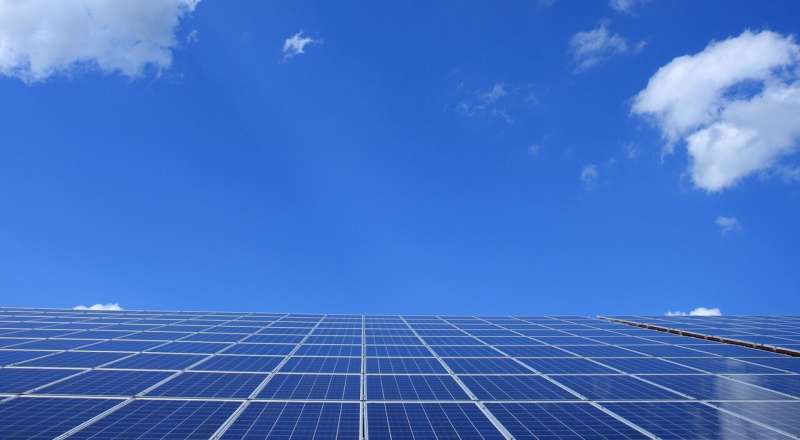Can solar power ever fully replace fossil fuels?

The 2019/20 Australian bushfire season, known as the black summer, changed how remote communities get electricity. But can we change the entire nation's energy use?
From its golden beaches to its vast deserts, Australia is a sunburnt country.
Australia has some of the best solar energy resources in the world, receiving 58 billion petajoules of solar radiation per year, according to Geoscience Australia.
If solar panels harvested all that solar radiation, it could supply the country's energy consumption 10,000 times over.
So what's the hold-up?
The tyranny of distance
Australia has one main power grid on each coast and a handful of smaller grids. The Australian Energy Market Operator runs these grids.
The grids send power from power stations connected by 918,000km of power lines.
But for remote communities at the end of those lines, power can be unreliable and expensive. It's a long journey to fix a downed power line, which can spark bushfires.
This summer's devastating bushfire season caused more than 80,000 power outages and cut off power to many remote communities.
Powering up remote communities
Solar power could prevent remote communities from losing power in the future.
The Resilient Energy Collective has donated $12 million to install stand-alone solar power systems in 100 bushfire-affected communities.
These systems have solar cells, batteries and a back-up diesel generator. This means cheaper power without having to rebuild many kilometres of power lines to the main grid.
But what about solar power for our cities?
Toward a cleaner future
Coal and gas supply 80% of Australia's power, which is a big problem for carbon emissions.
We pumped 532 million tonnes of carbon dioxide into the atmosphere last year, but renewable energy could help bring this number down.
Renewable energy comes from solar panels, wind farms and hydroelectricity from dams.
In 2016, nations joined the Paris Agreement targets on renewable energy by 2030. Australia is falling behind on these targets.
But it's not all bad news. Renewable energy has doubled its share in Australia's energy market over the past decade.
Switching to solar
The Clean Energy Council wants Australia to use more renewable energy.
The Council's Director of Energy Generation Anna Freeman says solar is a great place to start.
"Renewable energy is the cheapest form of new energy build," Anna says.
"There were more solar farms built last year than wind farms—a lot … from homes and businesses installing their own solar panels."
Fixing the network
While people switching to solar is great, there's a problem with our power grids. These grids were built decades ago when power flowed from power plants directly to houses.
These days, electricity moves in two directions. Power supplied from solar-powered homes moves one way, while electricity from power plants moves the other.
This means the smaller power lines connecting suburbs are carrying more electricity than they were designed to.
More than 2 million home solar panels are generating power, as well as large power stations.
The power lines bring that energy to batteries, while supplying electricity to homes. This is called a distributed network.
Anna says the nature of the network is changing.
"Now we have millions of homes generating their own power and putting it back into the network," she says.
Home solar panels don't always supply consistent power, such as when it's cloudy.
"This means there's more fluctuation in supply," Anna says.
"Home solar is not a controlled power station you can turn off or on to meet demand. You need new technology to deal with this."
Keeping the lights on
Solar panels only supply power during the day, often when no one's home. This requires large-scale batteries to store the supply.
"Power storage drives up the price, but it's still very competitive in the market," Anna says.
"Solar has contributed to power becoming cheaper during the day, but between 7 to 10 a.m. and 6 to 9 p.m., we haven't seen much impact.
"This means there's a stronger market for wind energy generation in those hours."
So while solar is great for our remote communities, we need to work on our power network before we can see benefits in our main cities.
This article first appeared on Particle, a science news website based at Scitech, Perth, Australia. Read the original article.



















